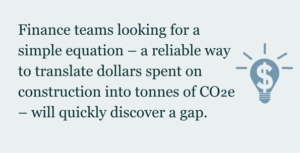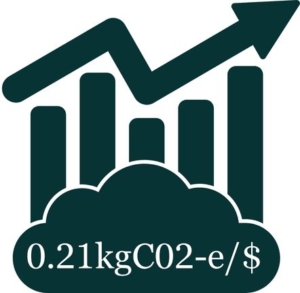Calculating Upfront Carbon:
Australia’s spend-based factor for calculating Scope 3 construction emissions
July 2025
As Australian companies prepare to disclose their Scope 3 emissions from 2026, construction presents a significant – and often overlooked – source of emissions. Slattery’s carbon accounting team offers a credible Australian-first method to convert construction spend into carbon impact.
At a glance
- Construction is carbon-heavy – even when it’s not your core business
- Capital works can contribute significantly to your Scope 3 footprint
- Upfront embodied carbon is locked in from day one, unlike operational emissions
- No credible public emissions factor for Australian construction has existed – until now
- Slattery’s conservative benchmark provides a practical starting point.
Why upfront embodied carbon matters
Construction may not be your core business, but it may account for a meaningful share of your Scope 3 footprint. Capital works are common, carbon-intensive and financially significant.
The challenge for finance teams
- Australia’s new climate disclosure regime commenced on 1 January 2025. Large businesses must report Scope 3 emissions – the indirect emissions across their value chain – from 2026.
- For organisations outside the construction sector, this can present a blind spot.
For most spend categories, emissions can be estimated using publicly available factors. But construction is different:
- No credible, publicly available spend-based emissions factor for embodied carbon exists
- Available data is often locked behind paywalls, tailored for niche applications or not suited to broad Australian industry adoption
- The Green Building Council of Australia notes that international guidance “is not consistent, and in some cases, may not be appropriate for Australian
conditions”.
Slattery’s spend-based emissions factor
Slattery has developed a conservative, spend-based factor for embodied carbon, developed specifically for Australian construction.
For every dollar spent on construction, applying a factor of 0.21 estimates the embodied carbon emissions (in kilograms of CO 2 equivalent).
For example:
- A company spends $25 million on construction in FY26
- Applying the Slattery factor of 0.21 yields 5,250,000 kilograms (5,250 tonnes)of embodied carbon (CO₂e)
- This equates to approximately 1 tonne of CO₂e for every $5,000 spent.
How this figure helps you prepare
This factor provides a high-level estimate for embodied carbon based on dollars spent. It can:
- Provide a consistent basis for mandatory disclosure, internal reporting and emissions reduction strategy
- Highlight data gaps for further investigation and incentivise more detailed measurement
- Encourage early engagement with carbon accountants or consultants
- Improve confidence in reported Scope 3 data
- Reduce the risk of underestimating carbon liabilities
- Better manage regulatory and reputational risks
- Guide smarter, more sustainable capital allocation
- Help avoid overpayment on offsets due to inaccurate estimation.
The fine print
Slattery’s figure is not a definitive answer – but a practical starting point. It is designed to be conservative and is not a substitute for first principles measurement of materials or the advice of a trusted quantity surveyor.
A cautious estimate – of more carbon, not less – encourages further investigation and deeper conversations.
In most cases, a more granular assessment will yield a lower emissions figure. For instance, actual emissions may be lower if low-carbon materials, recycled products or adaptive reuse strategies are used.
This figure is based on new building projects and does not currently apply to industrial developments, which have different material compositions and cost structures.
When we split the data by building type, we see variation. Fitouts, for example, are typically lower, with early estimates suggesting figures closer to 0.12 kgCO₂e per dollar. Further breakdowns by asset class will be shared in future updates.
Next steps
Australia’s mandatory sustainability reporting and climate-related disclosures, introduced on 1 January 2025, requires reporting entities to disclose their Scope 3 emissions from 2026.

Slattery’s conservative estimate offers a practical first step – a provisional baseline for entities facing construction-related emissions for the first time.
In time, more sophisticated tools and standards will emerge. Slattery is proud to contribute to this body of knowledge.

 For most spend categories, emissions can be estimated using publicly available factors. But construction is different:
For most spend categories, emissions can be estimated using publicly available factors. But construction is different:
